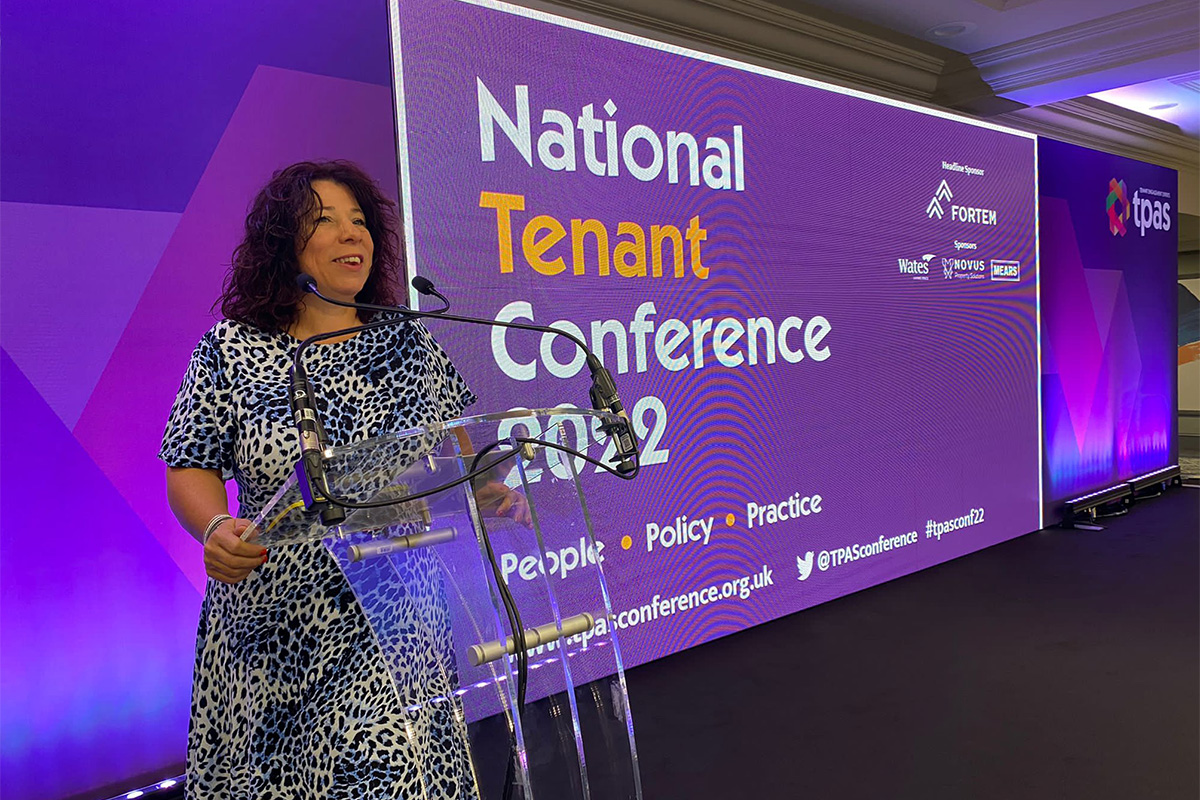How to reshape the landlord-tenant relationship
The Together with Tenants charter was launched by the National Housing Federation with the aim of resetting the relationship between housing associations and their tenants. Three years after its launch, Jess McCabe finds out how it is going. Illustration by Dan Woodger
What role should tenants have in making decisions about their homes and how their landlord operates? On paper, most people working in social housing will now say “a bigger one”.
But talking about tenant involvement is one thing. Putting tenants in the driving seat is another. How should landlords change their operating system so that they are genuinely devolving power to tenants?
One attempt to answer that question is the Together with Tenants charter. This is a “framework” launched by the National Housing Federation (NHF) that aims to, in the words of chief executive Kate Henderson, “connect with residents and work with them to establish relationships grounded in trust and accountability, so that we can support our communities through the challenges that lie ahead”.
The Together with Tenants charter (see box) was first put out for consultation back in spring 2019. An ‘early adopter’ programme followed, with 130 housing associations signing up to test implementation. Now that it has had a few years to embed, Inside Housing wanted to find out what kind of difference it has made.
Valerie Oldfield, a tenant of south London association Hexagon, is chair of the Together with Tenants tenant advisory panel. “Housing associations always need to have a resident voice within their organisation, or they won’t have a true picture of how the decisions they make will impact on the residents,” she says.
“Together with Tenants hits all those points that we all feel are needed in order for residents and housing associations to work together,” Ms Oldfield continues.
“When we started, they already had a draft of the charter and the plan, and we gave input to both, looking at it in detail. And what we wanted is for it to be meaningful, because a lot of what you find… on paper sounds so feasible and looks like it really reflects what needs to be done, but once it’s in practice, it doesn’t seem to pan out exactly the same. As residents, we could see how it would pan out.”
She explains how she became engaged with her own landlord: “I got transferred into another property with my association, and when I got into the property, there were lots of things that still needed to be done.
I don’t know how it got signed off as a lettable property.
“I wrote in a letter listing [what] needed to be done. That was taken as a form of complaint, and I got a stern letter back saying I was complaining. I wasn’t happy with it being taken as a complaint, so I decided to write to the director of housing services… I set out what I expected the housing association to do. She was impressed and got in touch asking if I wanted to be an involved resident and join the resident group.”
Ms Oldfield says the key to Together with Tenants is that social landlords must reset how they view tenants. Noting that housing associations are often ready to spend thousands bringing in expert consultants, she adds: “Residents can be their consultants.”
Jo Allen, head of member relations at the NHF, says the charter is not meant to be a “tick-box exercise”. She adds: “Where we have seen this work really well is when the whole organisation, from board members to frontline staff, understand what Together with Tenants means for them and their customers have had a role in co-producing Together with Tenants in their organisation. Residents have reported an increase in resident oversight and have a positive view on their ability to influence decisions.”
Aspire is one of the landlords that signed up as an early adopter of the charter. Customer engagement manager Adrian Foster explains that the 8,500-home association has designed a series of five “promises” to its tenants. “Where Together with Tenants fit into all this was when we were shaping the promises and the engagement commitment, there was one eye on the Together with Tenants standards,” he explains.
“It helps make sure that we were on the right lines… We feel the promises exceed what the Together with Tenants standards are, but [they were] the baseline guide.”
What is in the charter?
Housing associations that adopt the Together with Tenants charter are making six commitments:
Relationships: Housing associations will treat all residents with respect in all of their interactions. Relationships between residents and housing associations will be based on openness, honesty and transparency.
Communication: Residents will receive clear, accessible and timely information from their housing association on the issues that matter to them, including important information about their homes and local community, how the organisation is working to address problems, how the organisation is run, and information about performance on key issues.
Voice and influence: Housing associations will seek and value the views of residents and use this information to inform decisions. Every individual resident will feel listened to by their housing association on the issues that matter to them and can speak without fear.
Accountability: Residents will work in partnership with their housing association to independently scrutinise and hold their housing association to account for the decisions that affect the quality of their homes and services.
Quality: Residents can expect their homes to be good quality, well maintained, safe and well managed.
When things go wrong: Residents will have simple and accessible routes for raising issues, making complaints and seeking redress. Residents will receive timely advice and support when things go wrong.
Source: Together with Tenants charter, National Housing Federation
Rose Edwards-Bosworth is a member of Oasis, a group of six residents that Aspire set up as part of the development of its work on tenant engagement. “The good thing about it is being able to have your say when you know things aren’t right, holding Aspire accountable to all their policies and promises,” she says.
“Customer groups don’t make any decisions that aren’t based on insight. The easiest way for a customer to share their thoughts on a service is through surveys… that then informs the group. So what they’re looking at is a much broader sense of data, rather than just the opinions of the people in that room,” says Mr Foster.
As part of Oasis’ work, Ms Edwards-Bosworth says: “I go out and assess the empty properties and make sure Aspire are doing all the work.” Inspections by Oasis led to a tightening of the standards that Aspire was setting for getting homes ready for new tenants, she says.
“Housing associations have to truly commit to [Together with Tenants]. Not just because of the white paper or building safety”
The NHF says that more than 200 associations have signed up to Together with Tenants so far, representing 83% of its members’ homes. “We are pleased with this progress, but our ambition is for all housing associations to adopt Together with Tenants,” says Ms Allen.
Ms Oldfield cautions that it is not something that landlords should take on lightly. “For housing associations to adopt Together with Tenants, it’s going to take at least two years to get a good understanding and put things in place, and then a further year to be really embedded,” she says. She adds that it will also take some time to build trust with residents that their landlord is changing.
On the cases of disrepair in social housing that have led to national media coverage, Ms Oldfield says: “I feel that’s necessary in order to bring it to the attention of the public… and housing associations. If for years and years, residents have tried to communicate with their housing association [about their] situation and nothing concrete has been done, it leaves them no option.
“[But] if housing associations take [Together with Tenants] on board properly… they will hear these things first hand. Hopefully this will fall into the matrix of their systems and they will be able to avoid any other resident being in the same situation.”
She adds: “Associations have to truly commit to this. Not just because of the white paper or building safety. They’ve got to really commit to this and commit to a change of culture within the sector.”
Sign up to our Best of In-Depth newsletter
We have recently relaunched our weekly Long Read newsletter as Best of In-Depth. The idea is to bring you a shorter selection of the very best analysis and comment we are publishing each week.
Already have an account? Click here to manage your newsletters.












